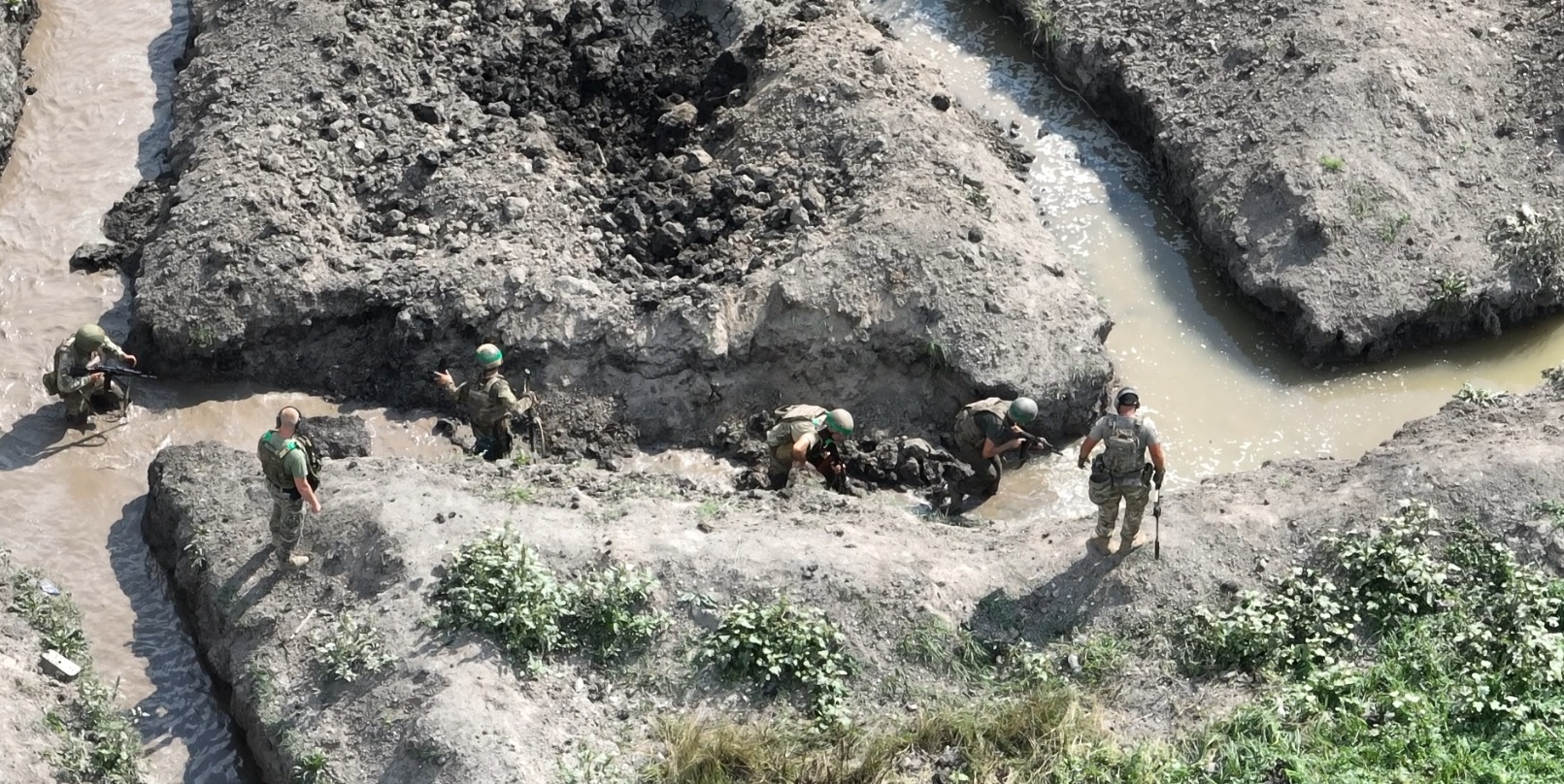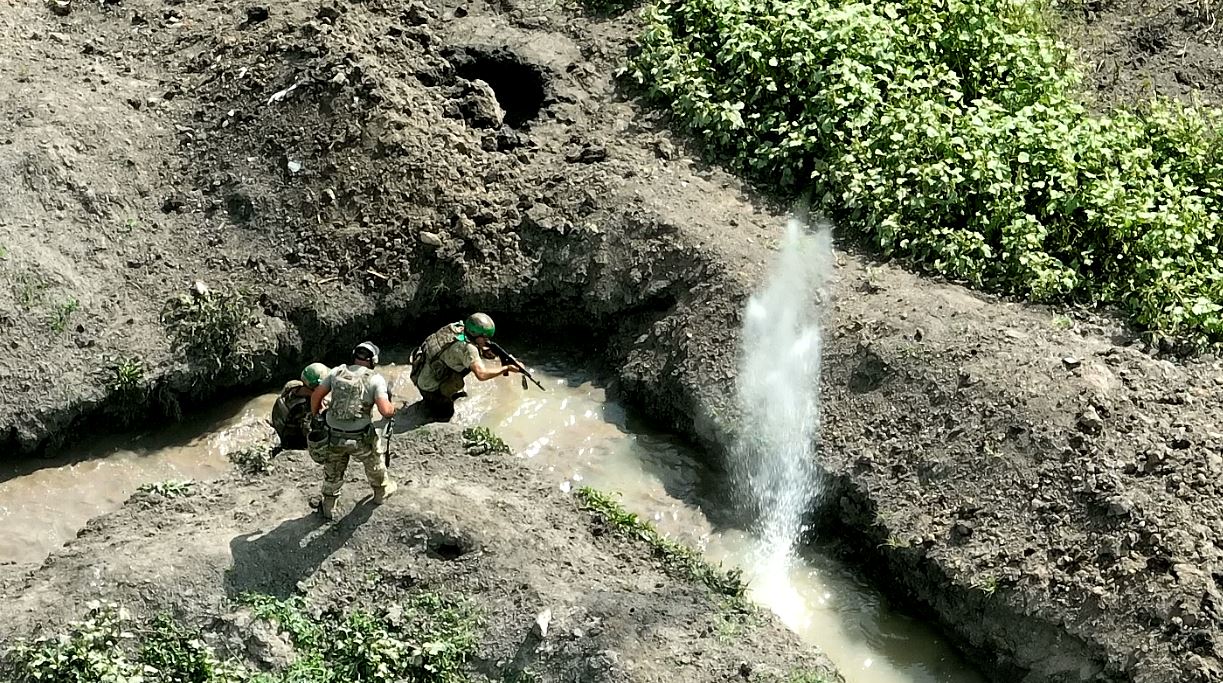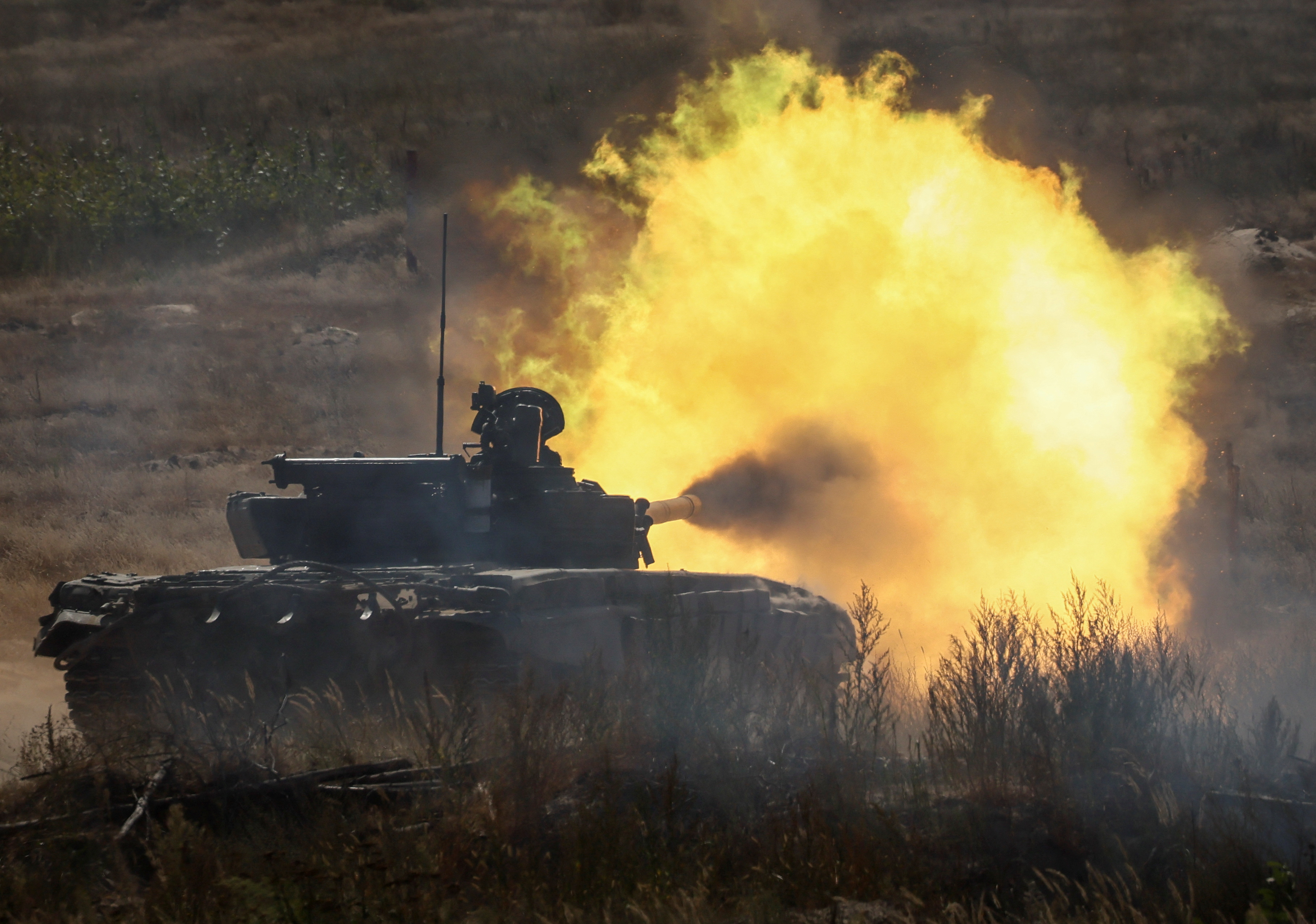
It looks like a real trench but this is in fact an artificial trench built to prepare Ukrainian soldiers for the realities of life on the frontline in Bakhmut./CGTN.
It looks like a real trench but this is in fact an artificial trench built to prepare Ukrainian soldiers for the realities of life on the frontline in Bakhmut./CGTN.
CGTN Europe's Iolo ad Dafydd reports from Bakhmut.
We'd been told it would be intense. Live ammunition and real explosions. Before we'd even parked our vehicle, we heard the sounds of war. Battalions of the 57 brigade are preparing in one of Bakhmut's outlaying districts. A training ground for the killing fields in eastern Ukraine.
Soldiers of all ages watch small squads navigating a zig-zag trench system, partly filled with water. They practice how to clear the area, shoot at the enemy and retrieve casualties while grenades and bullets fly past. Military instructors shout, and the commander in charge bellows orders. Men covered in mud and sweat try their best.
Ten minutes of effort and concentration seems like two hours. Exhausted they're debriefed on mistakes, wrong choices, and how in a real battle, indecision or carelessness could decimate their unit.
READ MORE
Erdogan says Türkiye could part ways with EU
Hungary's worrying population decline
Meloni says "future of Europe at stake" amid migrant crisis
Many men are older. Grey haired, unshaven, some potbellied. All are sunburned, most suck on cigarettes. Some laugh and joke, others sit under trees and look apprehensive.
Major Kostiantyn Tsymbal, whose call sign is Umka, looks like a warrior. He tells me: "Our main task is to attack the enemy, and in order to do that we need to prepare the soldiers as much as we can. All of these soldiers who are training here haven't been in combat yet."

A live explosion detonates in the water near two Ukrainian soldiers. All of the trainee troops are civilians with no combat experience, who are being taught the basics of battle by experienced soldiers./CGTN.
A live explosion detonates in the water near two Ukrainian soldiers. All of the trainee troops are civilians with no combat experience, who are being taught the basics of battle by experienced soldiers./CGTN.
An armored Swedish troop carrier careers down the track. Six of the troops rush out to clear trenches, looking for potential enemies. Rehearsals like these prepare the brigades for the real battles ahead. It's as realistic an exercise as these soldiers are likely to get.
To prepare for full-on fighting soldiers are given five scenarios. They need to pass them and show instructors they are capable and won't wilt under fire when deployed to face Russia's armed forces.
'Dok' a tough looking weapons training instructor with a Cossack-style pointed beard says: "I deliberately try and confuse the soldiers, and mislead them … It's a form of psychological suppression to see how they react to it. And it's a physical pressure too."
Dok and Umka are professional soldiers, selected from various brigades. They watch and move about as though they're unaware of live bullets zinging past or when blasts and clumps of earth from triggered explosions hit onlookers. Dok told me he received some of his training in the UK.
The infantrymen - whatever their ages - will have the unenviable task of being pitched against proven soldiers defending a territory they've had months to build. It's hard not to look at their faces and think how many will survive. How many casualties and how many lives will be changed?

Once civilians have completed their training they are sent to the frontline where they face the brutal reality of conflict, as seen here in northern Ukraine./Reuters/Gleb Garanich.
Once civilians have completed their training they are sent to the frontline where they face the brutal reality of conflict, as seen here in northern Ukraine./Reuters/Gleb Garanich.
Slowly the three-month-old counteroffensive in Ukraine is yielding modest gains. But Russian troops are well entrenched defensively. Sometimes as many as five layers of minefields, traps, anti-tank ditches and rows of concrete pyramids known as dragon's teeth form Russia's main fortifications. Some is said to be visible from space. On the ground, it makes Ukrainian advance painstakingly slow.
As the Ukraine Army infantry training is being stepped up its artillery keeps pounding away.
Near Bakhmut we visit an undisclosed location. We're told to follow a wooded footpath to an undisclosed location. Several artillery units fire nearby, and we hear the whistle of incoming shells. Each time we crouch or lie on the ground. Even if they land a few hundred meters away, the noise freezes the blood.
Soldiers can spend months here. Artillery howitzers are on constant standby and should be well hidden, as drones hover above the tree cover. Yevhen Kardan is a gunner and is familiar with using the Soviet made 2C1 Gvozdika mobile artillery cannon. He smokes quietly and speaks slowly.
"I was drafted in January and in April we started training on this vehicle, an artillery cannon. Then we came here. We've been fighting the Russians in this type of position for two months now, and it seems to be going well.”
Even if the battle for Bakhmut has ended, with the Russians claiming victory last May, the fighting all around the destroyed city continues. Both sides refuse to yield. The prize is pride as the rest is rubble. Thousands have died here in the past year.
We all hear the whistling sound of an incoming shell. Some of us crouch in a partly covered ditch. The radio crackles, and the crew spring into action. Their target is set. When called, they'll fire within 90 seconds of the order being given. The target is in Bakhmut.

Subscribe to Storyboard: A weekly newsletter bringing you the best of CGTN every Friday